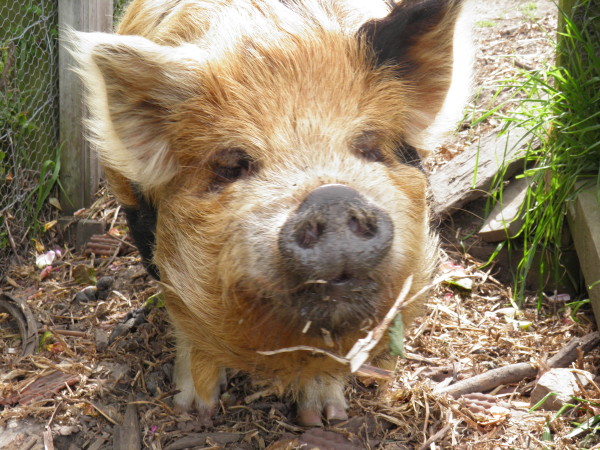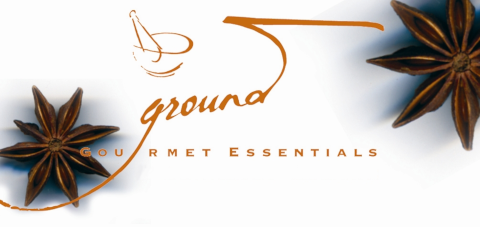
A shorter version of this article appeared in The Press and The Dominion Post on October 7th 2014.
How do you cook fennel, or is it best eaten raw? What else goes with it aside from fish?
Fennel belongs to the Umbellifereae family and is, therefore, closely related to parsley, carrots, dill and coriander. The bulb, stalk, leaves and seeds are all edible.
The word "fennel" comes from the Latin feniculum meaning "hay" The Greek name for fennel is marathon and the place of the famous battle of Marathon (from whence came the Marathon, the subsequent sports event), literally means a plain of fennel.
The health benefits of fennel purportedly include relief from anaemia, indigestion, flatulence, constipation, colic, diarrhoea, respiratory disorders, and menstrual disorders. It also has benefits for eye care. Fennel, or its essence, is widely used around the world in mouth fresheners, toothpastes, antacids and in various culinary applications.
The fennel you buy in supermarkets and Farmers’ Markets is called Florence fennel. It is related to the wild fennel plant that grows like a weed in New Zealand, however, the wild fennel has a bulb that is not so good to eat. It grows all over my hilly section and I have used the fronds from it as a flavouring in some dishes (when I can beat the pigs to it), but the bulb is usually small and woody. Florence fennel is crunchy and slightly sweet. It adds a refreshing contribution to the ever-popular Mediterranean cuisine. It is most often associated with Italian cooking, where it is a prized vegetable used in many dishes. The delicate anise flavour of fennel combines brilliantly with tomatoes, garlic, limes, lemons, pork, duck and sausages.
Following Italian tradition, try using sliced fennel as part of a pizza topping with onion and goats cheese or, sticking to the Italian theme, make Finocchio al forno – fennel baked in cream. Paired with prawns, diced fennel makes a zesty, light risotto. It is also good mixed with cooked zucchini and tossed through pasta.
Many recipes tell you to discard the fronds and the stalks when you are using the fennel bulb. This seems such a waste as the pretty, lacey fronds are delicious and make a delightful garnish. I have also experimented with using them on their own in some dishes. They make a great base to rest roast pork on in your oven dish or, for that matter, to roast vegetables or a whole fish on. The stalks are great added with other vegetables like carrots and onions to make a delicious vegetable stock. Put some stalks under the grill in your barbeque next time you cook fish, and it will add a superb smokey flavour to the fish. Or, you can finely mince the fronds and mix them through yoghurt, with a squeeze of lemon juice and some mint, to make a refreshing sauce to have on the side of chicken or lamb dishes.
Basic Roasted Fennel
You can jazz up this simple recipe by adding rosemary and lemon oil, or a Moroccan spice rub when you toss the fennel with olive oil and salt and pepper before roasting. Alternatively, toss the fennel with sesame sea salt, ginger-lemon soy splash, or toasted coriander and some garlic oil after it comes out of the oven.
Position a rack in the centre of the oven and heat the oven to 250°C. Line a heavy-duty, rimmed oven tray with baking paper. Trim the base and core of 2 fennel bulbs into quarters, leaving just enough of the core intact to hold the layers together. Cut into 2cm wedges. In a medium bowl, toss the fennel with enough of the olive oil to coat the wedges generously and then add salt, and a few grinds of pepper.
Turn the fennel out onto the oven tray and arrange the pieces so that they are evenly spaced and lying on a cut side. Arrange them toward the edges of the oven tray for the best browning. Leave them in the oven until the fennel begins to brown on the edges(about 15 minutes). Flip the fennel and continue to roast it until it is tender and nicely browned (about 10 minutes).
Return the fennel to the bowl in which you tossed them with the oil or put them in a clean serving bowl. If the fennel seems a bit dry, drizzle it with a little oil. Season to taste with salt, pepper, and lemon juice, if using. Serves 4 as a side.

Shaved Fennel Salad
If you are using a knife to prep the fennel, do your best to slice things very, very thinly - not quite see through thin, but close. A mandoline or a cheaper v-slicer are useful for this job. The edges of raw fennel can go brown once they are cut. To avoid this happening, pop them into a bowl of water that has a squeeze of lemon juice added to it. They can stay in this until you are ready to toss them in the salad. Serves 4 as a side.
1 medium-large zucchini, sliced into paper thin rounds 2 small fennel bulbs, trimmed , shaved (paper-thin) 2/3 cup fresh dill or fennel fronds, loosely chopped ⅓ cup fresh lemon juice, plus more if needed ⅓ cup extra virgin olive oil, plus more if needed ¼ teaspoon salt 4 or 5 generous handfuls rocket or baby spinach ½ cup almonds, toasted (or use pine nuts if you like) ⅓ cup feta cheese, crumbled
Combine the zucchini, fennel and dill in a bowl and toss with the lemon juice, olive oil andsalt. Set aside and leave to marinate for at least 20 minutes.
When you are ready to serve the salad, put the rocket or other spring greens in a large bowl. Scoop all of the zucchini and fennel onto the greens, and pour most of the lemon juice dressing on top of that. Toss gently, but thoroughly. Taste and adjust with more of the dressing, olive oil, lemon juice, or salt if needed. If the lemons were quite tart, you may need to counter the pucker-factor by adding a tiny drizzle of honey into the salad. Let your taste buds guide you. Serve topped with almonds and feta.
 Braised Fennel with Shallots.
Braised Fennel with Shallots.
This recipe will convert you if you are not a fan of fennel or liquorice flavour. Cooked fennel doesn’t have that liquorice taste at all. It is delicate and mellow. It has a natural sweetness and a texture that is similar to bok choy. Serves 4 as a side
3 tablespoons extra virgin olive oil 2 fennel bulbs, trimmed, quartered 4 shallots, halved 2 tablespoons white wine ½ cup chicken stock 2 sprigs thyme 1 teaspoon freshly squeezed lemon juice
Preheat the oven to 180ºC. Heat a heavy dutch oven over medium-high heat until very hot but not smoking. Add the oil and swirl to coat the bottom of the pan. Add the fennel and shallots and cook for 8 to 10 minutes, tossing about 2 times, until crusty and brown in spots. Add the wine, stock, and thyme. Cover the pan, transfer to the oven, and bake for 35 to 40 minutes, or until tender. Discard the thyme sprig and return the pan to medium-high heat. Bring to a boil and simmer for 4 to 5 minutes, or until the liquid is thickened and saucy. Drizzle with the lemon juice and season to taste with salt and pepper. Transfer to a platter and serve immediately.
You could chop the vegetables a little and toss with pasta and grated Parmegiano-Reggiano to make it into a main course. Alternatively, blend everything with more chicken stock for a nourishing soup.

